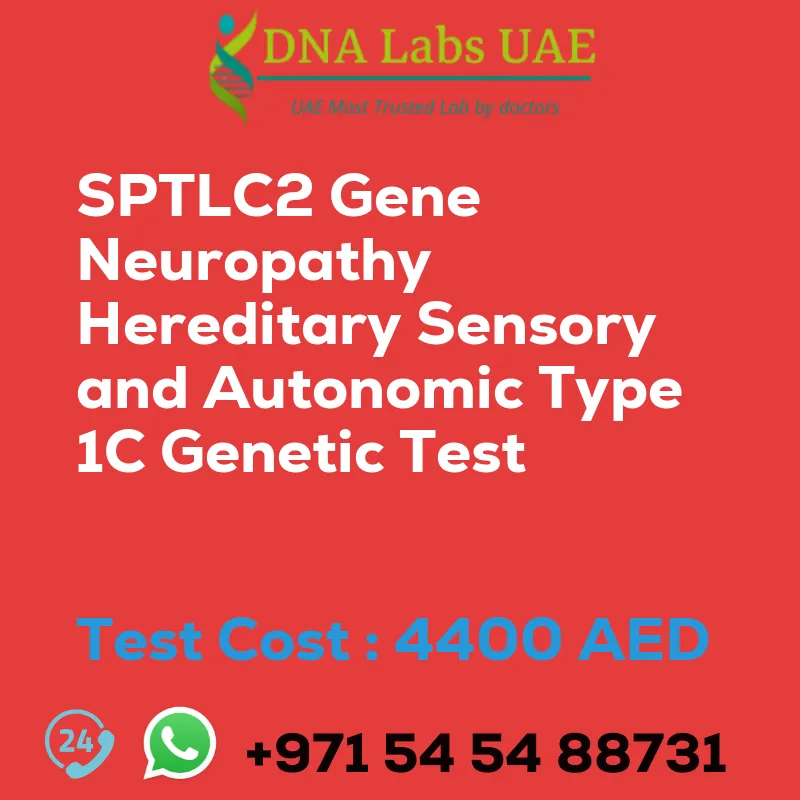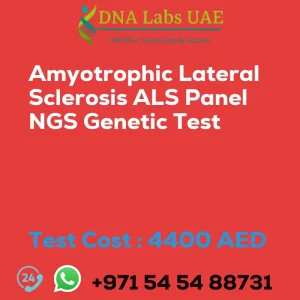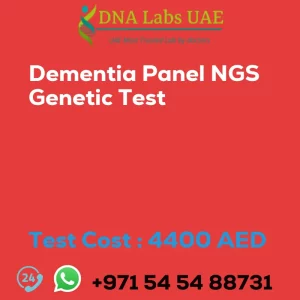SPTLC2 Gene Neuropathy hereditary sensory and autonomic type 1C Genetic Test
Test Name: SPTLC2 Gene Neuropathy hereditary sensory and autonomic type 1C Genetic Test
Components: Blood or Extracted DNA or One drop Blood on FTA Card
Price: 4400.0 AED
Sample Condition: Blood or Extracted DNA or One drop Blood on FTA Card
Report Delivery: 3 to 4 Weeks
Method: NGS Technology
Test type: Neurological Disorders
Doctor: Neurologist
Test Department: Genetics
Pre Test Information: Clinical History of Patient who is going for SPTLC2 Gene Neuropathy, hereditary sensory and autonomic type 1C NGS Genetic DNA Test. A Genetic Counselling session to draw a pedigree chart of family members affected with SPTLC2 Gene Neuropathy, hereditary sensory and autonomic type 1C.
Test Details: SPTLC2 gene neuropathy, also known as hereditary sensory and autonomic neuropathy type 1C (HSAN1C), is a rare genetic disorder that affects the peripheral nerves. It is caused by mutations in the SPTLC2 gene, which provides instructions for making an enzyme called serine palmitoyltransferase long chain base subunit 2. This condition is characterized by progressive damage to the sensory and autonomic nerves, leading to various symptoms such as loss of sensation in the hands and feet, muscle weakness, muscle wasting, impaired sweating, and difficulty controlling blood pressure and heart rate. The severity and progression of symptoms can vary among affected individuals.
NGS (Next-Generation Sequencing) genetic testing is a diagnostic method that can identify mutations in the SPTLC2 gene associated with HSAN1C. It involves sequencing the DNA of the individual to detect any changes or variations in the gene sequence. This test can help confirm a diagnosis of HSAN1C and provide valuable information for genetic counseling and management of the condition.
It is important to note that HSAN1C is a rare genetic disorder, and genetic testing may not be readily available in all healthcare settings. A geneticist or genetic counselor can provide more information and guidance on the availability and appropriateness of genetic testing for this condition.
| Test Name | SPTLC2 Gene Neuropathy hereditary sensory and autonomic type 1C Genetic Test |
|---|---|
| Components | |
| Price | 4400.0 AED |
| Sample Condition | Blood or Extracted DNA or One drop Blood on FTA Card o |
| Report Delivery | 3 to 4 Weeks |
| Method | NGS Technology |
| Test type | Neurological Disorders |
| Doctor | Neurologist |
| Test Department: | Genetics |
| Pre Test Information | Clinical History of Patient who is going for SPTLC2 Gene Neuropathy, hereditary sensory and autonomic type 1C NGS Genetic DNA Test A Genetic Counselling session to draw a pedigree chart of family members affected with SPTLC2 Gene Neuropathy, hereditary sensory and autonomic type 1C |
| Test Details |
SPTLC2 gene neuropathy, also known as hereditary sensory and autonomic neuropathy type 1C (HSAN1C), is a rare genetic disorder that affects the peripheral nerves. It is caused by mutations in the SPTLC2 gene, which provides instructions for making an enzyme called serine palmitoyltransferase long chain base subunit 2. This condition is characterized by progressive damage to the sensory and autonomic nerves, leading to various symptoms such as loss of sensation in the hands and feet, muscle weakness, muscle wasting, impaired sweating, and difficulty controlling blood pressure and heart rate. The severity and progression of symptoms can vary among affected individuals. NGS (Next-Generation Sequencing) genetic testing is a diagnostic method that can identify mutations in the SPTLC2 gene associated with HSAN1C. It involves sequencing the DNA of the individual to detect any changes or variations in the gene sequence. This test can help confirm a diagnosis of HSAN1C and provide valuable information for genetic counseling and management of the condition. It is important to note that HSAN1C is a rare genetic disorder, and genetic testing may not be readily available in all healthcare settings. A geneticist or genetic counselor can provide more information and guidance on the availability and appropriateness of genetic testing for this condition. |







